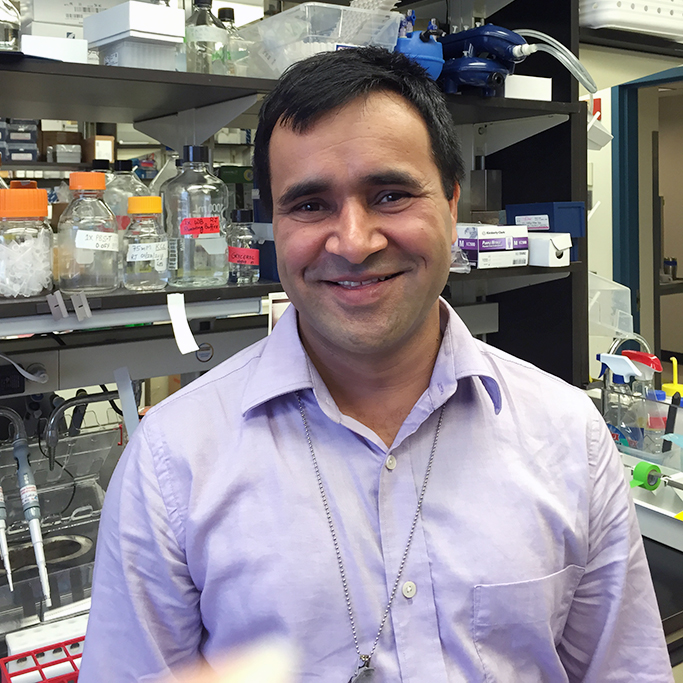Working with our frequent (and favorite!) collaborators, John Dye at USAMRIID, and Thijn Brummelkamp at NKI, we've just published a study in mBio, which identifies host factors that a virulent New World hantavirus, Andes virus, exploits to enter cells. This work was led in my lab by graduate student Lara Kleinfelter, working closely with postdoctoral fellow Dr. Rohit Jangra (pictured at right). Other key authors include co-first author Lucas Jae (Brummelkamp Lab) and Andrew Herbert (Dye Lab).
We first performed a loss-of-function genetic screen in haploid cells (also see Carette 2011). This screen was aimed at identifying host genes that, when knocked out, confer resistance to infection and killing by a vesicular stomatitis virus (VSV) bearing the Andes virus spike glycoprotein. Our screen uncovered genes associated with cholesterol biosynthesis and regulation, including most notably, multiple genes in the sterol regulatory element binding protein (SREBP) pathway (see animated GIF below; go here for a classic paper on the SREBP pathway by Brown and Goldstein). A recent paper from Paul Bates's and Ken Briley Jr.'s groups at Penn reported similar results to ours.
PORTIONS OF HOST CHOLESTEROL BIOSYNTHETIC (HMG-COA REDUCTASE) AND REGULATORY (SREBP) PATHWAYS ARE SHOWN. HITS IDENTIFIED IN THE HAPLOID GENETIC SCREEN ARE IN RED.
Taking our lead from the screen, we were able to directly show that Andes virus and other virulent hantaviruses need high levels of cholesterol in cellular membranes in order to enter and begin replicating in host cells. Additional experiments allowed us to pinpoint the entry step that is most highly cholesterol-dependent—the fusion step between viral and cellular membranes that culminates in viral escape into the host cell cytoplasm.
A bottom line—the membrane fusion mechanisms of hantaviruses are unusual in how much they 'love' cholesterol—the more we put into synthetic membranes, the better they fused with viruses containing hantavirus glycoproteins. In the future, we will further explore the molecular basis of this cholesterol dependence. Another idea worth exploring is whether the cholesterol 'addiction' of hantaviruses could be exploited to develop antiviral therapeutics.
Go here for the abstract and to download the manuscript.
Go here to browse other papers from the Chandran Lab, or type in the search box above to find other research blog entries.




